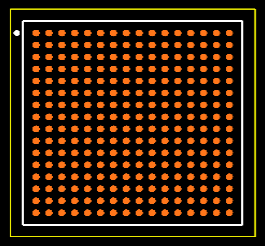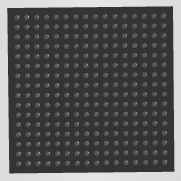EP3C16F256C8N FPGAs: Features, Applications and Datasheet
2025-08-07 14:55:57 759
EP3C16F256C8N Description
The EP3C16F256C8N is a member of the Altera Cyclone® III FPGA family, designed to provide high performance, low power consumption, and cost-effective programmable logic solutions. With its balance of logic density, embedded memory, and DSP capability, it is widely used in embedded systems, communication devices, and industrial control platforms. The 256-pin FineLine BGA (FBGA) package ensures compact integration while maintaining robust I/O connectivity.
EP3C16F256C8N Features
Logic Elements: 15,408 LEs, optimized for efficient logic design.
Embedded Memory: 516 Kbits of M9K embedded RAM blocks for flexible data handling.
Multipliers & DSP Blocks: 56 embedded 18×18 multipliers for signal processing tasks.
I/O Pins: 182 general-purpose I/Os supporting LVTTL, LVCMOS, PCI, and differential I/O standards.
Package: Compact 256-pin FBGA package, pitch 0.8 mm.
Clock Management: 4 PLLs for advanced clock synthesis and signal timing management.
Low Power Operation: Static power consumption as low as 0.5 mW per LE.
Configuration: Supports JTAG, Active Serial (AS), and Passive Serial (PS) configuration schemes.
EP3C16F256C8N Applications
Industrial Automation: Motor control, PLCs, and robotics requiring deterministic real-time logic.
Telecommunications: Packet processing, protocol bridging, and baseband signal handling.
Consumer Electronics: Video processing modules, display controllers, and digital cameras.
Embedded Systems: FPGA-based microcontroller extensions for custom hardware accelerators.
Medical Devices: Portable diagnostic equipment and imaging systems requiring low latency.
Automotive Electronics: Sensor fusion and driver assistance systems.
EP3C16F256C8N CAD Model
Footprint

3D Model



EP3C16F256C8N Alternatives
If EP3C16F256C8N is unavailable or unsuitable, consider these alternatives:
Altera Cyclone IV: EP4CE22F17C8N – More logic elements and improved speed.
Xilinx Spartan-6: XC6SLX16-2FTG256C – Similar density with broad industry support.
Lattice ECP3: LFE3-17EA-6FN484C – Focused on power efficiency and high-speed I/O.
Intel MAX 10: 10M16SAU169C8G – Includes integrated flash for single-chip solutions.
Microsemi IGLOO2: M2GL010-FGG256 – Low power with secure, flash-based FPGA fabric.
EP3C16F256C8N Manufacturer
Intel Corporation is a world-leading technology company headquartered in Santa Clara, California, USA. Founded in 1968 by Gordon Moore and Robert Noyce, Intel pioneered the development of the microprocessor, revolutionizing the computing industry. Over the decades, it has grown into a dominant force in semiconductors, processor architectures, and system solutions, powering everything from personal computers to cloud servers and AI platforms.
Intel is best known for its x86 series of CPUs, which have become the standard for most personal and enterprise computing systems. Beyond processors, Intel’s diverse portfolio includes chipsets, FPGAs, network interface controllers (NICs), graphics technologies, memory solutions, and Internet of Things (IoT) platforms.
Committed to innovation, Intel invests heavily in R&D and advanced manufacturing, including the development of cutting-edge process nodes like Intel 7, Intel 4, and Intel 3. The company is also playing a crucial role in next-generation technologies such as artificial intelligence, autonomous systems, 5G infrastructure, and quantum computing.
With global operations and a long history of technological leadership, Intel continues to shape the future of intelligent, connected devices.
EP3C16F256C8N FAQs
What is the maximum operating frequency supported by EP3C16F256C8N?
The device typically supports internal clock speeds of up to 315 MHz, depending on design and placement.
Can the EP3C16F256C8N support DDR SDRAM interfaces?
Yes, it can support DDR, DDR2, and SDR SDRAM interfaces, although timing closure may require careful PLL and routing optimization.
What configuration memory options are compatible with this FPGA?
Compatible options include EPCS serial configuration devices for AS mode, EPCQ for newer setups, or direct JTAG programming.
How many global clock networks are available?
The FPGA provides 20 global clock networks to support multiple clock domains and timing-critical designs.
What design tools are required for development?
The EP3C16F256C8N is supported by Intel Quartus II software (formerly Altera Quartus), providing synthesis, place-and-route, timing analysis, and bitstream generation.




